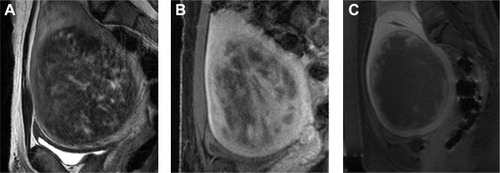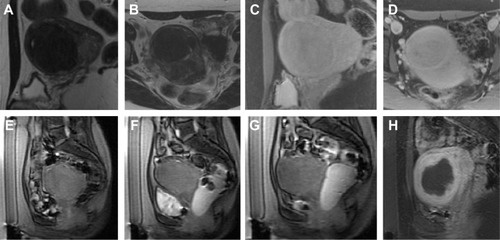Figures & data
Figure 1 Sagittal MRI of a typical case pre/post treatment.
Abbreviations: MRgFUS, magnetic resonance-guided focused ultrasound; MRI, magnetic resonance image.

Figure 2 Examples of MRgFUS screen failures.
Abbreviation: MRgFUS, magnetic resonance-guided focused ultrasound.

Figure 3 Example of MRgFUS screen failure due to innumerable small fibroids.
Abbreviation: MRgFUS, magnetic resonance-guided focused ultrasound.

Figure 4 Illustrative example of cellular fibroid.

Table 1 MR imaging findings that require evaluation on the screening MR and on the planning MR on treatment day
Figure 5 Photograph depicting a patient lying in the prone position on the magnetic resonance (MR) table.

Figure 6 Illustrative example of manipulation of beam path obstruction.

